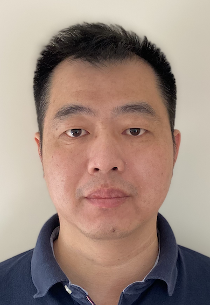ACES Workshop
Dates and Location
Dates: July 18, 2024 - July 20, 2024 (Thursday – Saturday)
Location: OMNI Providence Hotel, Rhode Island (map)
Overview
Please join Texas A&M High Performance Research Computing (HPRC) in Providence for a pre-conference workshop ahead of the Practice & Experience in Advanced Research Computing (PEARC24) conference. You’ll learn how the ACES (Accelerating Computing for Emerging Sciences) testbed complements the National Science Foundation’s portfolio of advanced cyberinfrastructure (CI) resources and services that are supported through the U.S. taxpayer investment. Participants will meet kindred community members and future collaborators from across the country.
ACES features a menu of accelerators in a hardware composable infrastructure designed to excel with artificial intelligence/machine learning (AI/ML) tasks with an Open OnDemand interface that commands a robust and growing software ecosystem. The HPRC advanced user support team will conduct tutorials and present PEARC24 papers that chronicle how ACES tackles data-intensive AI/ML tasks with greater speed, precision and efficiency. Participants from all domains are welcome to deliver lightning talks about their own ACES experience, and share how it has influenced their plans for the future.
Applications from professional staff and research faculty who work at minority-serving institutions of higher learning, demographics that are underrepresented in STEM academics and careers (Science, Technology, Engineering, and Mathematics), and research domains that are new to advanced CI are especially encouraged to apply. All must provide a brief description of their current research, future plans for ACES engagement and a biosketch (current NSF format).
Registration waivers and travel support are available for a limited number of U.S.-based applicants. Non-academic industry or government affiliates will be charged a $350 registration fee. If you have questions, or if you’d like to present your research, please contact: events@hprc.tamu.edu.
Schedule (Subject to Change, all times are EDT)
Last updated: July 19, 2024
| Thursday, July 18 | Reception and Dinner |
|---|---|
Omni Hotel and ResortMapAddress: One West Exchange Street, Providence RI, 02903Phone Number: 401-598-8000 | |
| 6:00PM - 6:30PM | Reception with Light Hors d'Oeuvres Newport/Washington (Third Floor) |
| 6:30PM - 9PM | Buffet Dinner Newport/Washington |
| Friday, July 19 | Tutorials and Lightning Talks |
|---|---|
| 8:00AM - 9:00AM | Continental Breakfast (Waterplace I, 2nd Floor) |
| 9:00AM - 9:10AM | Opening Remarks Bob Chadduck, National Science Foundation (Waterplace II/III) |
| 9:10AM - 9:30AM | ACES Overview Honggao Liu, Texas A&M High Performance Research Computing (Waterplace II/III) |
| 9:30AM - 12:00PM | AI/ML Workflows on ACES Accelerators (slides) Zhenhua He, Texas A&M High Performance Research Computing (Waterplace II/III) |
| 12:00PM - 1:30PM | Buffet Lunch and Lightning Talks (Waterplace I) |
| 1:30PM - 5:00PM | NVIDIA CUDA-Q hosted on NVIDIA DLI Mike O'Keeffe, NVIDIA (Waterplace II/III) |
| 6:30PM - 9:00PM | Buffet Dinner (Newport/Washington) |
| Saturday, July 20 | Tutorials | ||||
|---|---|---|---|---|---|
| 8:00AM - 8:45AM | Continental Breakfast (Waterplace I) | ||||
| 8:45AM - 9:00AM | Office of Advanced Cyberinfrastructure (OAC) Learning and Workforce Development (LWD) Jenny Li, National Science Foundation (Waterplace II/III) |
||||
| 9AM - 10:15AM | Julia (slides)
Wesley Brashear, Texas A&M High Performance Research Computing (WaterPlace I) |
9AM - 10:15AM | Using containers on ACES for Simulations, Bioinformatics and AI/ML (slides)
Richard Lawrence, Texas A&M High Performance Research Computing (WaterPlace II/III) |
||
| 10:15AM - 10:30AM | Break | ||||
| 10:30AM - 12:00PM | AlphaFold (slides)
Michael Dickens, Texas A&M High Performance Research Computing (Waterplace I) |
10:30AM - 11:15AM | Drona Composer Demo (slides)
Marinus Pennings, Texas A&M High Performance Research Computing (WaterPlace II/III) |
||
| NVIDIA Parabricks (slides)
Wesley Brashear, Texas A&M High Performance Research Computing (Waterplace I) |
11:15AM - 12:00PM | LAMMPS on PVC Demo (slides)
Richard Lawrence, Texas A&M High Performance Research Computing (WaterPlace II/III) |
|||
| 12:00PM - 1:00PM | Lunch (Waterplace I) | ||||
| 1:00PM - 3:00PM | ACES Office Hours (Waterplace I) | 1:00PM - 3:00PM | Advisory Board Meeting (Waterplace II/III) | ||
| 3:00PM - 5:00PM | CXL Meetup (Waterplace I) | ||||
Here’s what early-adopters have to say about ACES!








Acknowledgment
The ACES team gratefully acknowledges support from the National Science Foundation (NSF). The ACES project is supported by the Office of Advanced Cyberinfrastructure (OAC) award number 2112356. For more information about ACES, please visit https://hprc.tamu.edu/aces/.
Contact Information
Phone: 979-845-0219
Email: events@hprc.tamu.edu
